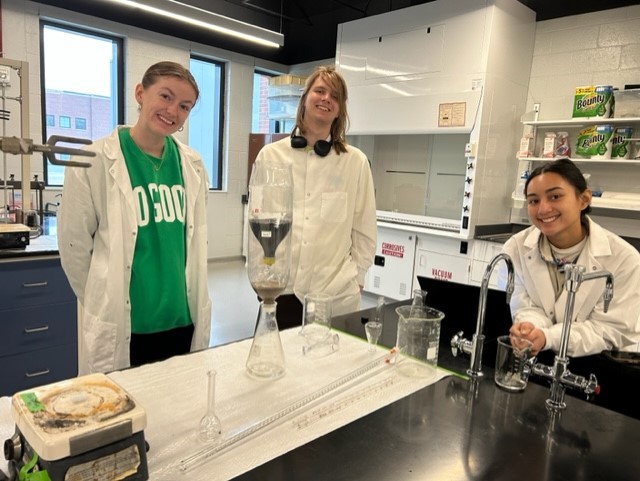Calendar Icon
Feb 01, 2024
Person Bust Icon
By Staff, Civil and Environmental Engineering
![]() RSS
Submit a Story
RSS
Submit a Story
This past Fall semester, students in Professor Bruce Dvorak’s ENVE 101 class showcased their real-world problem-solving skills in a water treatment design challenge. In teams of four, students were tasked with designing and building a drinking water treatment system in the lab using a simulated, contaminated water source.
The simulated water source featured contaminants such as red food dye and bentonite clay, replicating the presence of organic and suspended solid pollutants. Each team's treatment system was required to incorporate at least one coagulation, flocculation, and sedimentation step, along with at least one filtration step utilizing sand and/or granular activated carbon.
To assess the effectiveness of their treatment systems, teams measured the concentration of suspended solids using a turbidity meter and food dye concentration with a spectrophotometer. Additionally, each group estimated the treatment cost based on their chosen dosage rates, derived from preliminary jar testing and filtration.
All teams achieved high water quality with comparable costs. However, the winning team, comprised of ENVE students Andrew Ferguson, Nick Hoffman, Blake Vyhlidal, and Luke Woods, distinguished themselves by achieving the lowest concentrations of contaminants and the most economical solution. Their success was attributed to the optimization of coagulant dosage, strategically neutralizing the particles' surface charge.
Beyond technical proficiency, the project also provided students with insights into the economic intricacies influencing design decisions in water treatment. This hands-on experience allowed them to grasp the real-world considerations involved in environmental engineering, broadening their understanding of the field beyond the technical aspects. This experience will continue to be built upon as students progress in ENVE courses, ensuring a solid foundation for their future endeavors in environmental engineering.
Submit a Story




